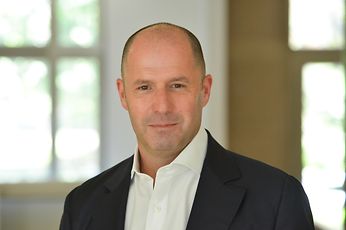25 Years ETF trading: Interview series #5
25 Years ETF trading: Interview series #5 Thorsten Michalik, CEO Europe, UK and Americas, HSBC Asset Management
25 years ago, on April 11, 2000, Deutsche Börse made history: It was the first stock exchange in Europe to launch ETF trading. On the occasion of our anniversary, we look back at the experiences of some ETF pioneers.
What motivated you to get involved in the ETF sector back then?
When I moved back to Frankfurt from Hong Kong in 2006, my previous position was no longer available. Therefore, I was offered the opportunity to build an ETF business. It’s hard to believe today, but in 2006 there wasn’t much information available about ETFs, and in the beginning, it was relatively difficult to get a good overview of the available products, providers, and assets under management.
Much more difficult, to be honest, was developing an idea of the potential growth of this industry. I can tell you that in our boldest assumptions about the possible growth of the industry, we didn’t even come close to imagining the growth that has now been confirmed.
What challenges did you face in establishing the Xtrackers brand?
There was already an existing “physical ETF business” which we closed after a year to build a “synthetic ETF business.” This approach was met with a lot of skepticism at the time, as was passive investing in general, as it wasn’t yet mainstream. Overall, people were pleased that the trend towards passive investing had been recognized early on, but they were also aware that there would be some business areas that would be rather negative about the topic, especially with regard to issue premiums and management fees.
How have ETFs changed the financial landscape in Europe?
ETFs have become the preferred choice for multi-asset investors and asset managers. These days, there’s hardly an asset manager who doesn’t use ETFs. Large capital pools are now also focusing on ETFs, as the products have become extremely large and thus qualify under various investment guidelines. Free execution fees and savings plans have also led smaller investors, in particular, to turn to ETFs via neo-brokers. It can be assumed that there will be over 10 million ETF savings plans in Germany in the next few months.
Which developments have surprised you most in the last 25 years?
The constantly increasing number of available ETFs. When I started in the ETF business in 2006, there were fewer than 100 ETFs in Europe, and I could never have imagined that we would see more than 500 ETFs in Europe. Now there are already over 3,000. I also wouldn’t have thought that there would ever be a hybrid product like active ETFs.
What was your proudest moment in your ETF career?
The introduction of free ETF savings plans in Germany, despite much resistance. Soon there will be 10 million ETF savings plans in Germany. I am also proud that, together with my team, I have trained many talented people in the field of ETFs over the last almost 20 years, who are now spread throughout the global ETF industry and try every day to further improve the ETF product. I am pretty sure that the next 25 years will eclipse the last 25 years in terms of growth and innovation in the ETF industry.
What challenges does the ETF industry have to face in the future?
On the one hand, the marketing of products as ETFs, which are rather unsuitable for this due to their lack of liquidity. On the other hand, the question arises as to whether every provider really needs an ETF business. Some participants do not yet have the necessary infrastructure to cope with emerging stressful situations. One should definitely not underestimate the investments in IT and personnel that are necessary to build up an ETF provider that offers service and quality in customer service in stressful situations in addition to good index tracking. As always: everyone can sail in sunshine…
Should there really be a harmonization of the different ETF markets in Europe, this certainly also represents a great opportunity for the ETF industry.
